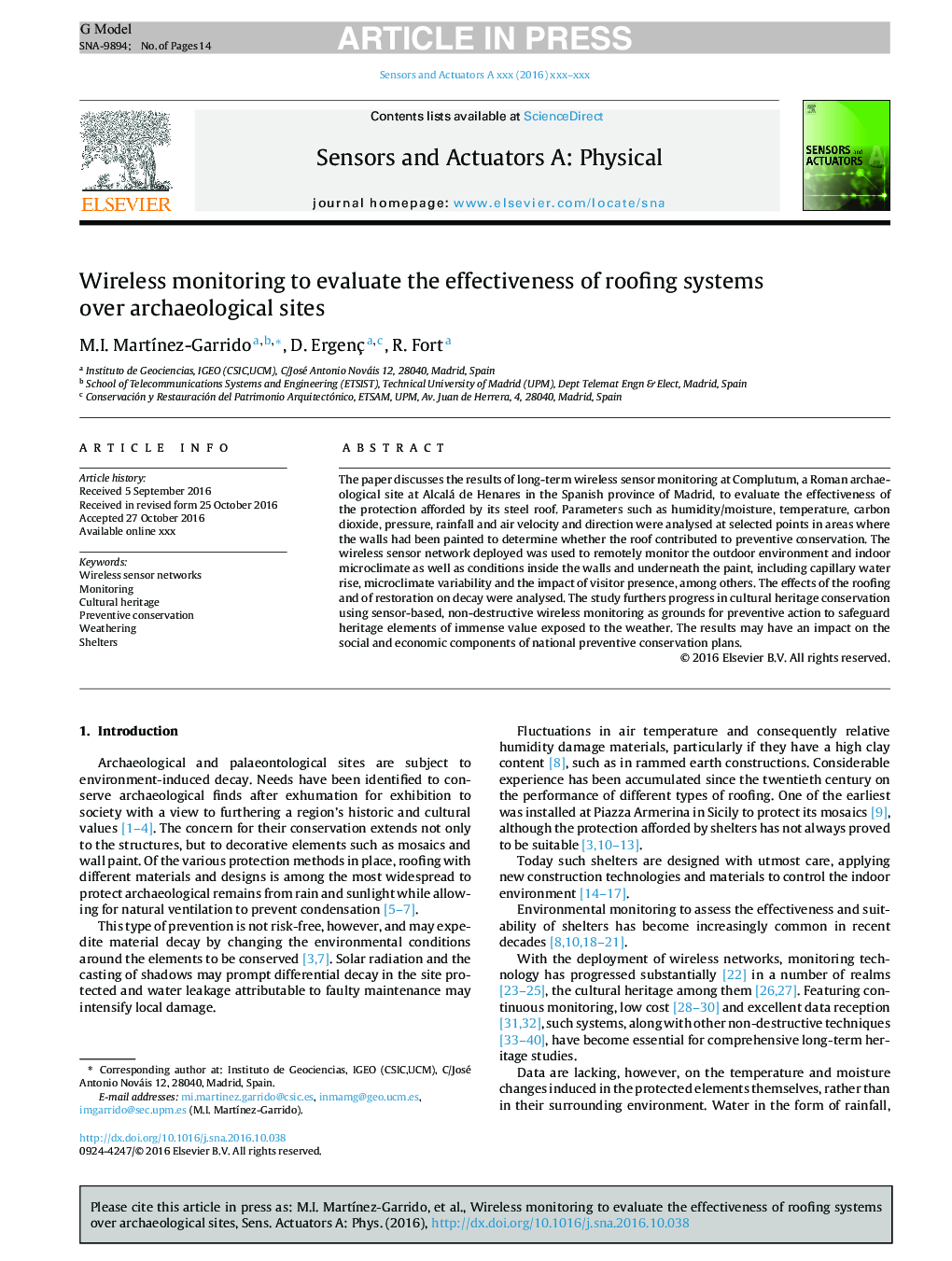| Article ID | Journal | Published Year | Pages | File Type |
|---|---|---|---|---|
| 5008498 | Sensors and Actuators A: Physical | 2016 | 14 Pages |
Abstract
The paper discusses the results of long-term wireless sensor monitoring at Complutum, a Roman archaeological site at Alcalá de Henares in the Spanish province of Madrid, to evaluate the effectiveness of the protection afforded by its steel roof. Parameters such as humidity/moisture, temperature, carbon dioxide, pressure, rainfall and air velocity and direction were analysed at selected points in areas where the walls had been painted to determine whether the roof contributed to preventive conservation. The wireless sensor network deployed was used to remotely monitor the outdoor environment and indoor microclimate as well as conditions inside the walls and underneath the paint, including capillary water rise, microclimate variability and the impact of visitor presence, among others. The effects of the roofing and of restoration on decay were analysed. The study furthers progress in cultural heritage conservation using sensor-based, non-destructive wireless monitoring as grounds for preventive action to safeguard heritage elements of immense value exposed to the weather. The results may have an impact on the social and economic components of national preventive conservation plans.
Keywords
Related Topics
Physical Sciences and Engineering
Chemistry
Electrochemistry
Authors
M.I. MartÃnez-Garrido, D. Ergenç, R. Fort,
